Enter the realm of exact motion, where small steps result in amazing things. With the help of this stepper motor guide, stepper motors’ powers can be harnessed by both experienced engineers and inquisitive beginners.
Understanding Stepper Motors
Imagine a motor that moves in slow, regulated steps instead of in circles. Stepper motor magic is just that! These technical wonders pull the rotor—the spinning part—around in precise increments by using electromagnetic coils to create a revolving magnetic field. Steppers, in contrast to their DC counterparts, provide discrete control, which makes them the ideal option for applications that need accuracy and consistency.
Why do we use stepper motor?
In this stepper motor guide, for those new to the world of electronics and robotics, going into the area of motors can feel frightening. A picture of frustration and technological difficulties is frequently depicted by wires, circuits, and intricate control systems. But do not worry, would-be makers! Stepper motors offer a spark of hope for novices alike, combining straightforward connection and accurate control into a harmonious whole. Here are few points that can answer the questions like – Why do I need a stepper motor? Why do we use stepper motor? When should a stepper motor be used? Why stepper motors are widely used? etc.
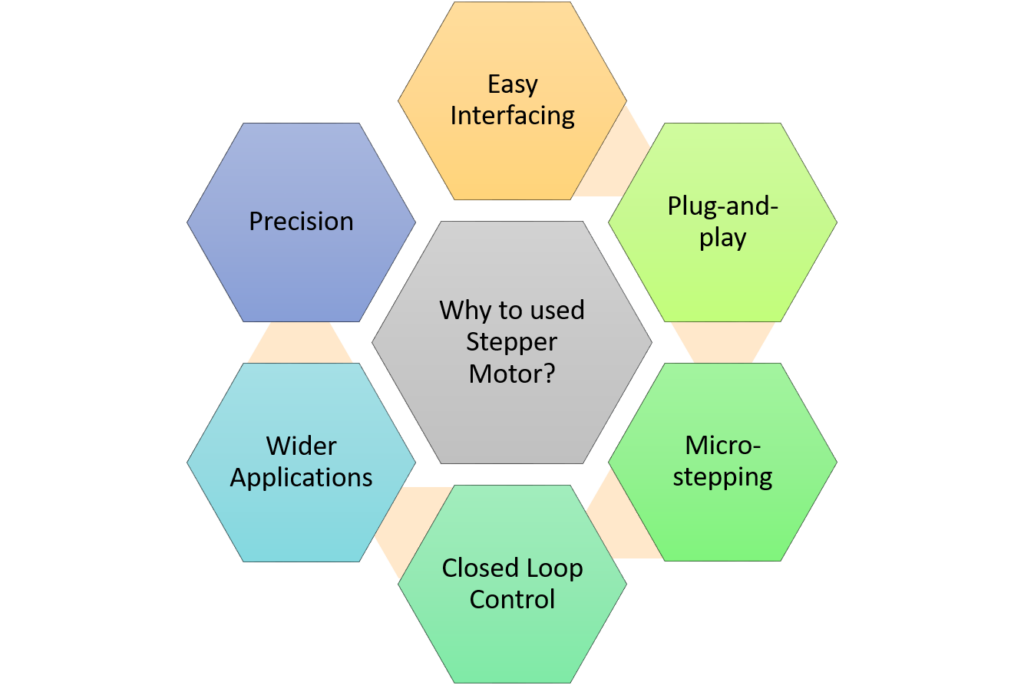
Precision
Stepper motors are not like their continuous-spin siblings; they do more than merely whirr. They move in deliberate, measured steps, similar to a painstaking tailor creating a work of art. For beginners, this unmatched control opens up a world of possibilities, enabling you to: Create complex designs; Direct robotic movements; Activate musical instruments; and much more.
Easy Interfacing
Are you worried about understanding intricate circuits and code? Steppers facilitate the process of transferring your thoughts into tangible reality. A few instances include microcontroller-compatible, In order to translate the digital commands from your microcontroller into the language of magnetic fields and accurate rotations, dedicated drivers serve as interpreters. Many stepper motors include pre-soldered connectors and simple wire configurations. This “plug-and-play” method makes soldering even for individuals with little experience a simple process.
Beyond the Basics
Stepper motors have a surprising depth for those who want to explore, even if their ease of use is a big selling point. You can explore topics like Sensor Integration, Closed-Loop Control, Microstepping Magic, and more as your confidence increases.
A Stepping Stone to Endless Possibilities
Stepper motors are an invitation to explore, create, and innovate—they are more than simply tools. Thanks to the magic of precise control and simple connection, they provide newcomers with a smooth entrance point and enable them to develop projects that were previously unthinkable.
Stepper Motor Fundamentals [Stepper Motor Guide]
Basic operating principle of stepper motors
At first look, stepper motors—those marvels of controlled movement—might appear to be miraculous machines. However, the clever engineering and exquisite interaction of electromagnetic forces are what give them their charm. Let’s explore the inner workings of their mechanism, dissecting the complex dance of revolving magnetic fields, electrified coils, and step-by-step movement.
The Anatomy of a Stepper Motor
Envision a little theater platform featuring permanent magnets as the main attraction and electromagnetic coils acting as the actors. These coils, which are usually phased or paired, encircle an iron tooth rotor. A steady magnetic field is produced by the permanent magnet at the center of the stage, filling the whole area.
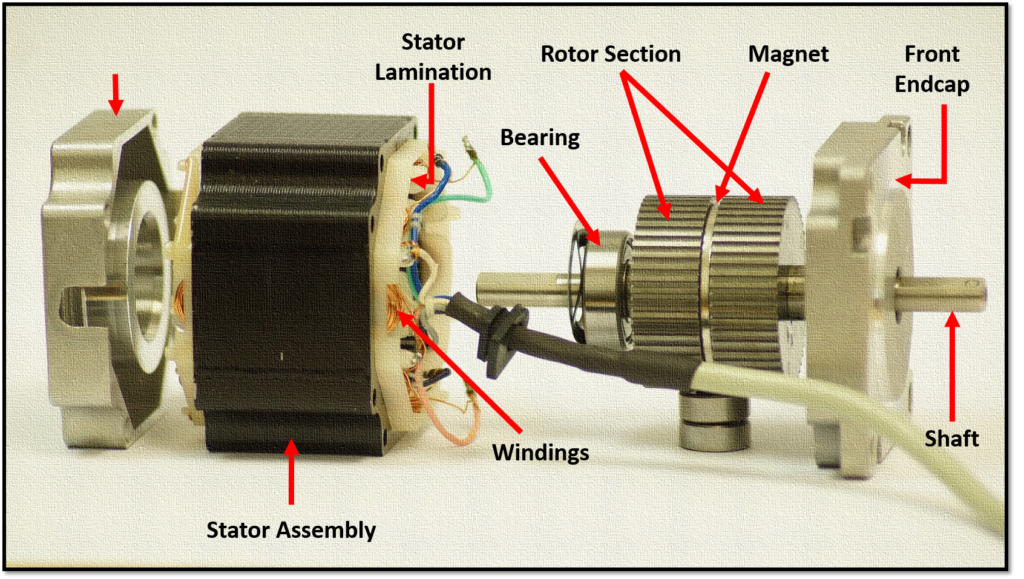
Energizing the Coils and the Dance Begins
When electricity passes through the coils, the spectacle begins. This produces a magnetic field of its own and engages in an interesting tug-of-war with the field of the permanent magnet. Depending on the precise phase sequence (the order in which the coils are energized), the resulting magnetic field pulls and pushes on the rotor teeth, causing it to rotate.
Rotating the Field, Rotating the Rotor
Imagine the coils as dancers sharing a baton, each one energizing the next. The rotor teeth are pulled toward the permanent magnet by the interaction between the temporary magnetic field produced by each coil and the permanent magnet. The next coil assumes control as the baton moves on, producing a fresh magnetic field that forces the rotor farther. The energizing and de-energizing coils dance in a sequential fashion, producing the rotor’s step-wise movement.

Art of Microstepping: Dividing the Steps for Smoother Motion
Imagine a ballet dancer pirouetting with exceedingly small, perfect steps. Stepper motors employ a process known as microstepping to accomplish a comparable degree of refinement. The magnetic field varies in tiny steps as a result of the coils receiving smaller current bursts, giving the rotor even smaller steps. This produces movement that is smoother and more polished, making it perfect for robotic arms and 3D printing applications.
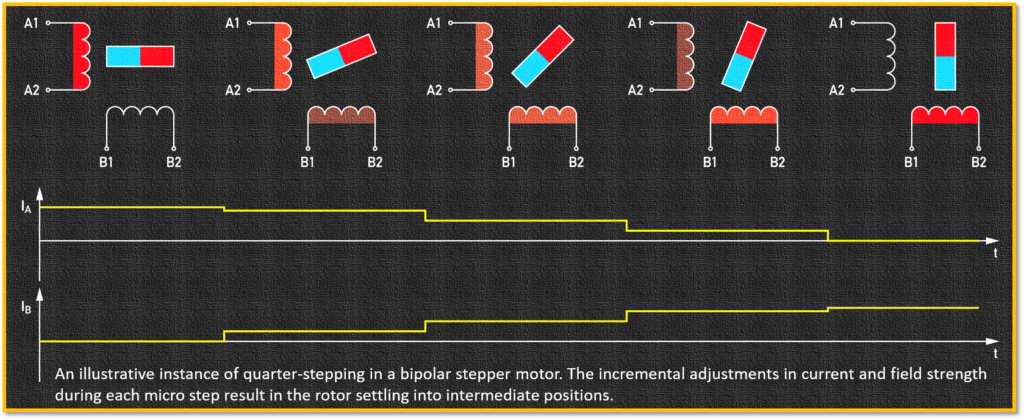
The Power of Detent Torque
Despite the de-energized coils, the stepper motor does not collapse. Detent torque is the name given to the tiny resistance that is created while the permanent magnet remains in place. By ensuring the rotor stays in place when not in motion, this “holding power” helps to preserve positional precision and stop unintentional slippage.
The Role of Drivers and Microcontrollers
Stepper motors require a controller to direct their motions, just like orchestras do. Drivers are electronic devices that take commands from microcontrollers such as Arduino and perform this task. The direction and speed of the rotor’s dance are controlled by these drivers, which convert the digital inputs from the microcontroller into the proper sequence and amount of electrical current to energize the coils. Below Image show the role of micro-controller and driver for working of stepper motor.

Optimizing Step Sequences and Power Consumption
As a well-practiced dancer saves energy, so too can selecting the ideal step sequence greatly affect the efficiency of your stepper motor. Understanding the interplay between the magnetic fields and using strategies like full-step vs. half-step or microstepping will help you reduce energy loss and make sure your motor is operating at its best.
Different Types of Stepper Motors [Stepper Motor Guide]
Stepper motors are a colorful theater, with each type serving a broad variety of motion needs and each having its own strengths and shortcomings. We are going to take you on a tour to meet these interesting individuals today, where we will analyze their traits and determine which stage best suits them.
The Workhorse: Permanent Magnet (PM) Steppers
Imagine a motor as reliable as a trusty steed, always ready to take on the load. That’s the permanent magnet (PM) stepper, your go-to choice for basic tasks where affordability and torque reign supreme.
- Torque: PM steppers pack a punch, excelling in applications demanding high pulling power, like 3D printers and CNC machines.
- Step Resolution: While not the ballerina of the motor world, PM steppers offer acceptable step resolution, typically around 40-100 steps per revolution.
- Cost: The crown jewel of PM steppers is their affordability, making them accessible to beginners and budget-conscious makers.
- Noise: On the downside, their simple construction can lead to higher noise levels compared to other types.
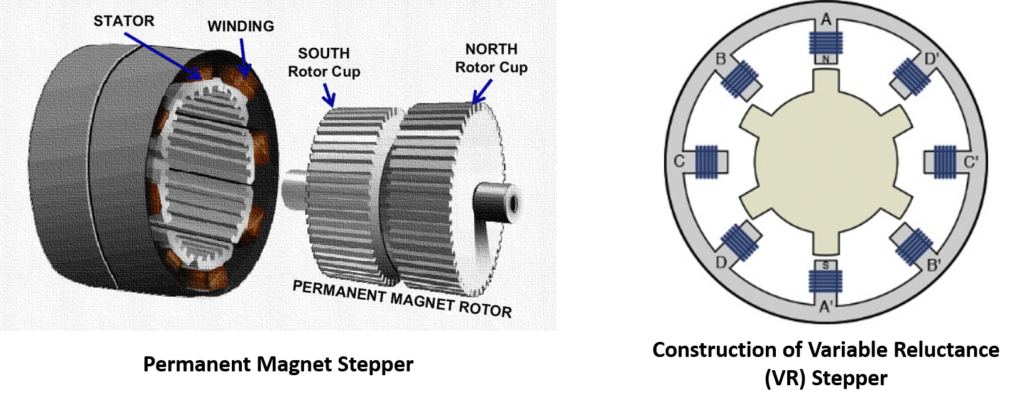
The Muscle Bound: Variable Reluctance (VR) Steppers
For those seeking pure, unadulterated power, variable reluctance (VR) steppers stand tall, their bulging magnetic muscles rippling with raw torque.
- Torque: VR steppers are the undisputed champions of brute force, capable of handling heavy loads and demanding industrial applications.
- Step Resolution: Their focus on power comes at the expense of step resolution, typically limited to 25-50 steps per revolution.
- Cost: Expect to pay a premium for this strength, as VR steppers are more expensive than their PM counterparts.
- Complexity: Their unique design requires specialized drivers, adding to the complexity of your setup.
The Graceful Hybrid: Hybrid Synchronous Steppers
Combining the best of both worlds, hybrid synchronous steppers offer a smooth, graceful dance of power and precision.
- Torque: While not as strong as VR steppers, hybrids deliver respectable torque suitable for various applications.
- Step Resolution: They shine in the realm of accuracy, boasting impressive step resolutions of 200 or even 400 steps per revolution.
- Cost: Hybrids fall somewhere between PM and VR in terms of cost, offering a balance of performance and affordability.
- Noise: Their smooth operation translates to lower noise levels compared to PM steppers.
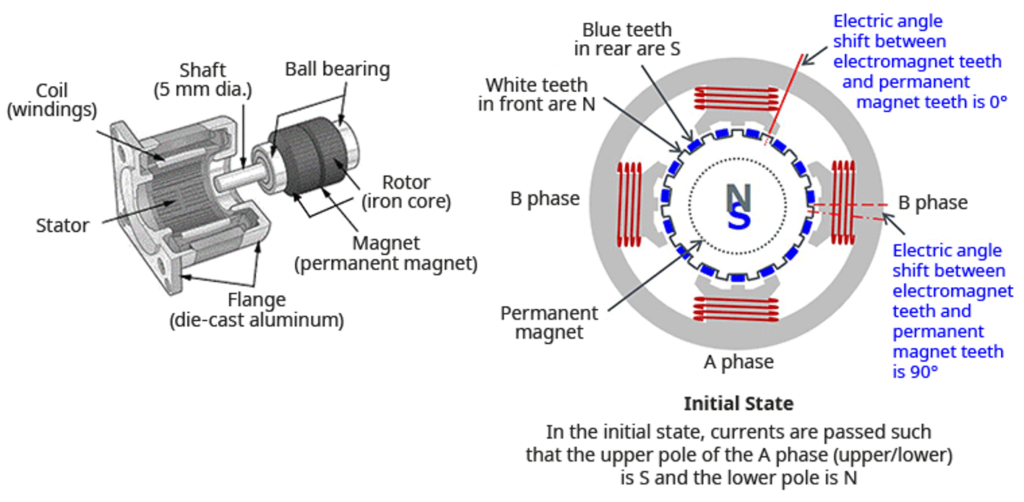
The stepper motor family extends beyond these core types, each offering unique strengths for specific needs.
- Unipolar vs. Bipolar Steppers: Unipolars are simpler to wire but offer lower torque, while bipolars require more complex connections but deliver higher power.
- Stepper Servos: Combining stepper technology with servo control mechanisms, these offer high precision and dynamic response times for demanding applications.
- Linear Steppers: Unlike their rotary counterparts, linear steppers move in a straight line, perfect for tasks like laser cutting or robotic arm movements.
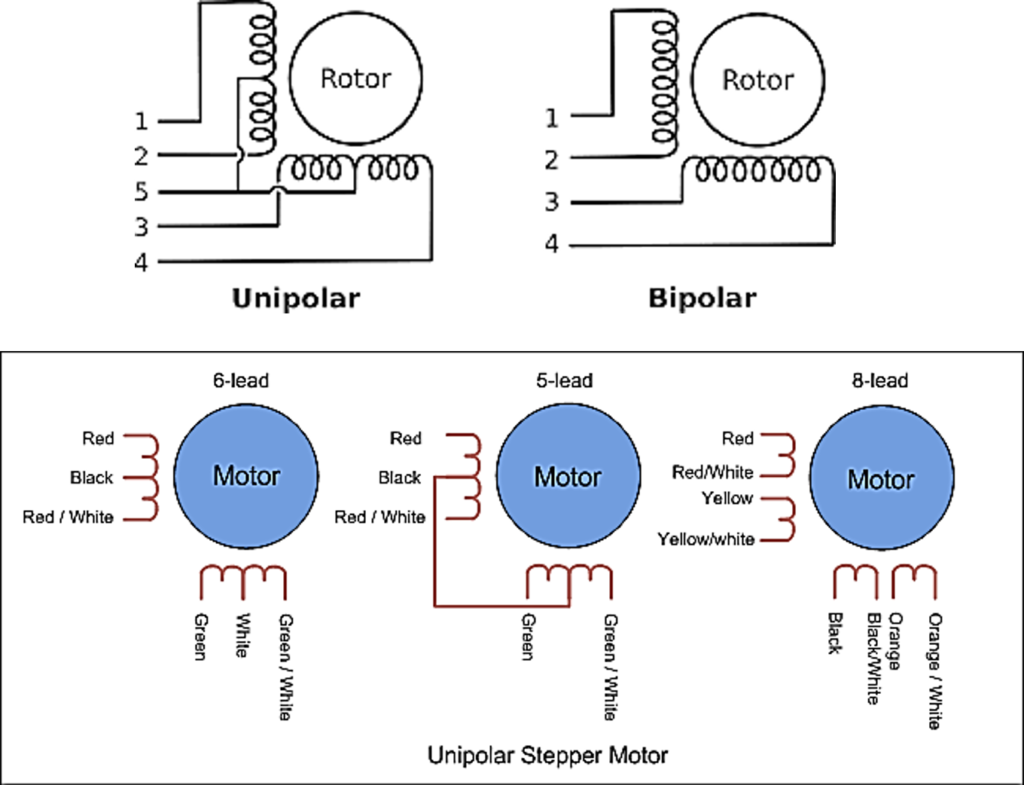
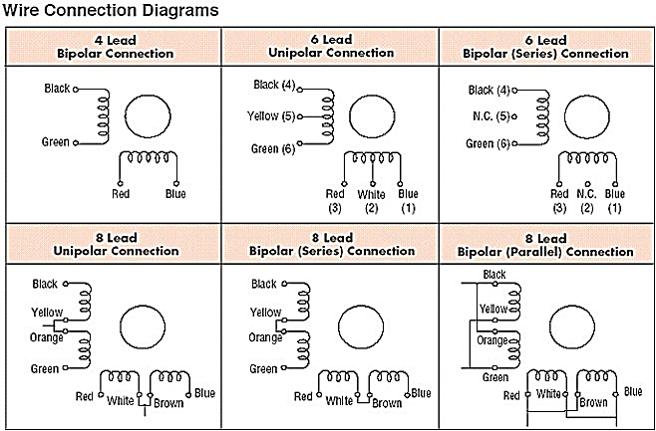
How to choose a stepper motor/[Stepper Motor Guide] Selection Guide
Stepper motors are a dynamic field with a tapestry of torque, speed, phase configurations, step resolution, and sizes. Selecting the appropriate one for your project is similar to choosing the ideal brushstroke for your masterpiece; every parameter is vital in determining the final form. Now that you have your symbolic palette ready, let’s explore the nuances of stepper motor selection!
The King of Power: Torque and Its Realm
Picture a sculptor working with a chisel to carve complex intricacies out of a granite block. The force a stepper motor applies to overcome resistance and move objects is known as torque, and it is like the chisel’s strength. It’s the first parameter to take into account since it determines how well the motor can carry out duties and handle loads.
- Heavy Lifting: Need your motor to muscle through hefty loads? Permanent magnet (PM) and hybrid synchronous steppers are your allies, boasting impressive torque capabilities for tasks like 3D printing and CNC machining.
- The Delicate Touch: For tasks demanding finesse, like robotic arm movements or precision adjustments, variable reluctance (VR) steppers might be your match. They offer lower overall torque but excel in high-force applications requiring precise control.
- Finding the Balance: Hybrids offer a happy medium, balancing respectable torque with smooth operation, making them suitable for applications like automated musical instruments or camera rigs.
The Dance of Speed: Finding Your Perfect Tempo
The speed at which your stepper motor completes its spins is determined by its composition, much like a composer sets the tempo for a symphony. Cycle times, overall efficiency, and productivity are all impacted by this characteristic.
- The Need for Speed: Projects requiring rapid movements, like laser cutting or high-speed 3D printing, demand steppers capable of high revolutions per minute (RPM). Look for motors with fast response times and minimal lag.
- Slow and Steady Wins the Race: Precision often requires a patient approach. For tasks like time-lapse photography or robotic arm manipulations, prioritize motors that offer smooth, controlled movements at lower speeds.
- Gearing Up for Efficiency: Remember, gears can be your allies! You can use them to trade torque for speed or vice versa, tailoring the motor’s output to your specific needs.
The Art of Precision: Step Resolution and Its Delicate Strokes
Imagine a painter meticulously applying tiny brushstrokes to create a photorealistic portrait. Step resolution, the number of discrete steps per revolution a motor can take, is your brush’s precision. The higher the resolution, the smoother and more intricate your movements.
- The Master of Detail: Projects demanding near-perfect positioning, like intricate robotic movements or laser engraving, require steppers with high step resolutions (e.g., 400 steps per revolution).
- Finding the Right Balance: For tasks where absolute precision isn’t critical, like basic positioning or controlling simple mechanisms, lower resolutions (e.g., 40-100 steps per revolution) might be sufficient and offer cost-efficiency.
- The Power of Microstepping: Don’t underestimate the magic of microstepping! This technique divides each step into even smaller increments, significantly improving smoothness and accuracy, even with lower resolution motors.
The Language of Connection: Phase Configurations and Their Nuances
Just as languages have different dialects, stepper motors come in two “dialects” – unipolar and bipolar. Choosing the right one depends on your project’s complexity and desired control.
- Unipolar Simplicity: Unipolar motors are easier to wire, requiring only two connections per phase. They’re ideal for beginners and projects with limited control requirements.
- Bipolar Precision: Bipolar motors offer greater torque and controllability, requiring four connections per phase. They’re the preferred choice for demanding applications requiring precise positioning and dynamic movement.
Finding Your Fit: Size Matters in the Stepper World
Just as a sculptor wouldn’t use a sledgehammer for delicate carving, the size of your stepper motor should be appropriate for your project’s space constraints and power needs.
- Mighty Minis: For compact projects like mini robots or automated instruments, small steppers with low torque and high resolutions are perfect.
- The Powerhouses: For tasks demanding high torque and larger movements, like CNC machines or industrial equipment, larger steppers are essential.
- Finding the Sweet Spot: Consider factors like available space, weight limitations, and desired torque output when choosing the size that seamlessly integrates with your project.
Advanced Parameters Discerning Maker
The world of stepper motors offers a treasure trove of advanced parameters for those seeking even greater control and optimization. Explore these gems:
- Detent Torque: This “holding power” keeps the motor in position even when unpowered, ensuring stability and positional accuracy.
- Current Rating and Power Consumption: Choose a motor with a current rating that meets your project’s needs without exceeding its limits, optimizing power consumption and preventing overheating.
- Thermal Considerations: Steppers generate heat. Ensure proper ventilation and heat sinks for high-power applications to maintain motor health and performance.
- Driver Compatibility: Match your motor’s voltage and phase configuration with the capabilities of your chosen driver for seamless integration and optimal control.
Now, it’s time to transform theory into practice! Here’s a roadmap for selecting the perfect stepper motor for your project:
- Define Your Project Needs: Clearly identify the tasks your stepper will perform, the required torque, speed, and precision levels.
- Explore the Options: Research different types of steppers (PM, VR, hybrid) and consider their strengths and weaknesses in relation to your needs.
- Parameter Dance: Analyze key parameters like torque curves, step resolution charts, and size limitations to narrow down your choices.
- Matchmaking with Drivers: Choose a driver that’s compatible with your motor’s voltage, phase configuration, and current requirements.
- Prototyping and Testing: Don’t be afraid to experiment! Build prototypes and test different motors to find the perfect fit for your project.
Conclusion
With its thorough coverage of the common question on stepper motor guide (like When should a stepper motor be used), fundamentals, types, how to choose stepper motors for your project or application, and advanced parameters, this comprehensive guide will take you from stepper motor novice to master. We’ll explain technical terms, offer motivational tasks, and provide you with tools to support your stepper motor explorations! Prepare to enter a world of precise movement and limitless opportunities!

